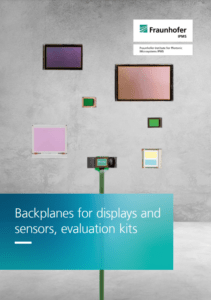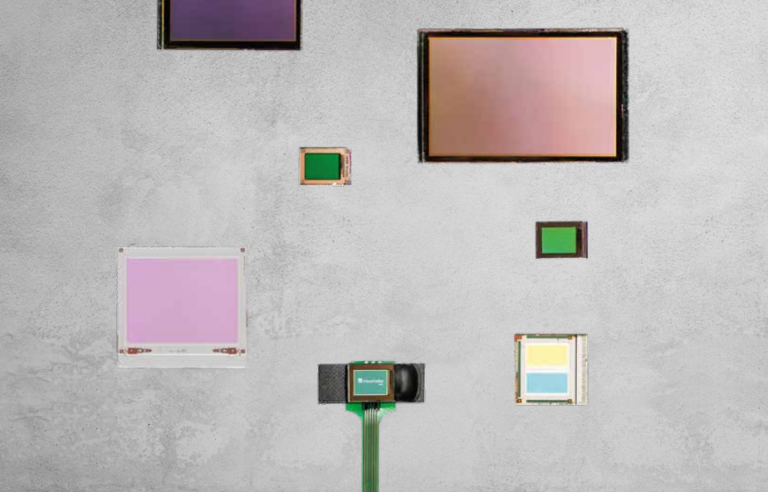Technology and service
Augmented Reality (AR) and Virtual Reality (VR) have arrived in the age of digitalization and industry 4.0 both in everyday work and private life. For professional applications, a third scenario can be considered: the all-round vision display, which provides instructions or detailed information about the working environment or about machine status. Currently available data glasses are evolving rapidly. We are working on improving ergonomics, construction depth and running time, thus making compact, powerful and userfriendly data glasses become reality.
The heart of all data glasses are their displays. For each application, certain parameters will affect user acceptance of the system. Each parameter, such as optical performance or power consumption, has a different significance for the respective application. Fraunhofer IPMS has many years of know-how in the development and manufacturing of such application-specific OLED microdisplays. This includes all steps from the initial idea to the backplane design. We support you along the entire value chain – from the design of the organic components to manufacturing, whether it be a few prototypes or small series production.
Our microdisplays are based on the monolithic integration of OLEDs on silicon chips to control the individual pixels. These chips or wafers can also be used to drive and read out alternative active layers. Examples would be display technologies based on quantum dots or micro-LEDs.
Our research and development work at Fraunhofer IPMS focuses on the development of OLED microdisplays for AR and VR data glasses as well as sensor applications. The display concept and parameters such as resolution, pixel size and integrated additional functions can be tailored to to specific projects and customers. The spectrum ranges from ultra low power displays for small and lightweight data glasses to high-resolution HD displays for VR glasses and viewfinders up to bidirectional displays with embedded image sensor functionality for fingerprint sensors or eyetracking data glasses. We do not only offer the integration of OLED or a combination of OLED and photodiodes for bidirectional microdisplays, but also the integration of organic photodiodes (OPD) as sensors on a CMOS readout circuit.
Furthermore, we use our competencies and technologies for the development of special sensor ASICs using e.g. OLEDs and photodiodes for the detection and selection of certain substances in gases as a basis for universally adaptable sensor platforms. In addition to technology and component development, we are also available for initial application studies, technology consulting and transfer. We support the manufacturing of low volumes as well as small series.
In order to facilitate an uncomplicated transfer of our technologies and components into customer-specific applications, Fraunhofer IPMS offers a selection of evaluation kits, which address various application areas such as allround vision, AR, VR and Mixed Reality as well as gas sensor technology.
Evaluation kits as development tools
- Ultra low power OLED microdisplays
- 720p microdisplays
- High-resolution WUXGA OLED microdisplays
- Bidirectional OLED microdisplays
- Sensors /organic photodiodes
- Universal optical sensor platform
Silicon backplanes for customized and alternative applications
The display backplanes can also be used for alternative technologies in addition to OLEDs. These range from quantum dots (QDs), Liquid-Crystal-on-Silicon (LCOS) and micro-LEDs up to read out options of sensitive layers. Apart from the fields of application mentioned before, further branches such as medical and biotechnology as well as opto-genetics (e.g. by combining microscopic excitation light sources with embedded photodetectors) can be explored. The availability of the circuits and suitable control electronics reduces the NRE costs for experiments and enables a near-term evaluation at the same time.
We are at your service and will be happy to support customerspecific developments. Please do not hesitate to contact us with any questions you may have.


